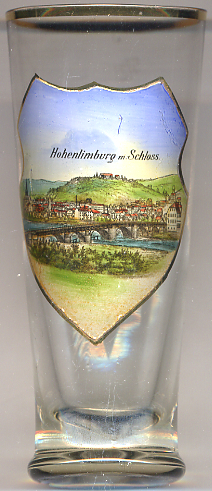

|
| DEUTSCHLAND | GERMANY |
| Bundesland: Nordrhein-Westfalen | North Rhine-Westphalia |
| Regierungsbezirk: Arnsberg | |
| Stadt: Hagen |
Hagen is situated at an elevation of 106 m on the eastern edge of the Ruhr area, 15 km south of Dortmund, where the rivers Lenne, Volme and Ennepe meet the river Ruhr. The municipality has a population of about 188,500 (2010).
Hagen was first mentioned ca. 1200, presumably the name of a farm at the junction of the Volme and the Ennepe. After the conquest of castle Volmarstein in 1324, Hagen passed to the
County of Mark. In 1614 it was awarded to the Margraviate of Brandenburg according to the Treaty of Xanten. In 1701 it became part of the Kingdom of Prussia. After the defeat of
Prussia in the Fourth Coalition, Hagen was incorporated into the Grand Duchy of Berg from 1807 to 1813. In 1815 it became part of the new Prussian Province of Westphalia.
The growth of the city began in the 19th century with the mining of coal and the production of steel in the Ruhr Area. It was the scene of fighting during the Ruhr Uprising of 1920
and has a monument to the Ruhr Red Army. On the night of 1 October 1943, a British air raid caused severe damages. After World War II the town became part of the new state of
North Rhine-Westphalia. Eile and Wehringhausen were incorporated into Hagen in 1875.
Haspe, Boele, Fley, Halden, Herbeck, Holthausen and Vorhalle were incorporated into Hagen in 1929.
Hohenlimburg and Dahl were incorporated into Hagen in 1975.
[https://en.wikipedia.org/wiki/Hagen, https://de.wikipedia.org/wiki/Hagen; https://de.wikipedia.org/wiki/Haspe; https://de.wikipedia.org/wiki/Eilpe]

Hohenlimburg (until 1879 known as Limburg an der Lenne) is a city borough of Hagen.
Limburg castle was first mentioned in documents of 1242 and 1243. The counts of Altena-Isenberg, owners of the castle, later changed their names to counts of Limburg.
In 1592 the county came in possession of the counts of Bentheim (1629 Bentheim-Tecklenburg-Rheda). The town below the castle began to develop in the 17th century.
Until the begining of the 18th century, the county remained a fief of the counts of Berg; in 1729 the county finally became immediate to the empire.
Since 1841 Limburg was the seat of the district of the same name, which also included Elsey, Letmathe and östrich. The name Limburg was changed officially
to Hohenlimburg in 1879 in order to avoid confusion with Limburg an der Lahn. Elsey was incorporated into Hohenlimburg in 1902.
On 1 January 1975 Hohenlimburg was incorporated into the city of Hagen.
[https://de.wikipedia.org/wiki/Hohenlimburg]
 Hohenlimburg castle [background] goes back to the 13th century and was first mentioned in 1242 and 1243.
Until 1807 it remained the political centre of the county of Limburg.
Extensive modifications were made in the middle of the 16th century, and again in the first half of the 18th century when it had come in possession
of the counts of Bentheim-Tecklenburg. It remained the main residence of the counts (1817 princes) until 1830 when the residence was moved to castle Rheda.
The castle still is in possession of the family and today houses the museum for metal rolling.
Hohenlimburg castle [background] goes back to the 13th century and was first mentioned in 1242 and 1243.
Until 1807 it remained the political centre of the county of Limburg.
Extensive modifications were made in the middle of the 16th century, and again in the first half of the 18th century when it had come in possession
of the counts of Bentheim-Tecklenburg. It remained the main residence of the counts (1817 princes) until 1830 when the residence was moved to castle Rheda.
The castle still is in possession of the family and today houses the museum for metal rolling.
[https://de.wikipedia.org/wiki/Schloss_Hohenlimburg]
![[scale]](lineal.jpg)